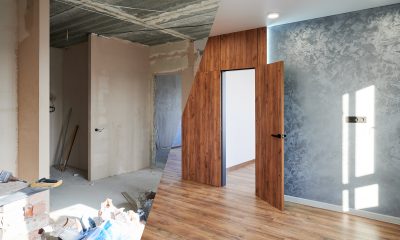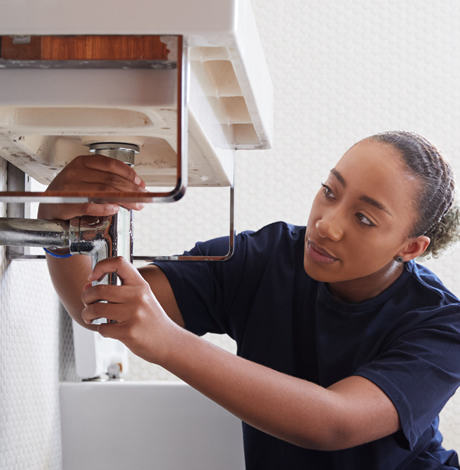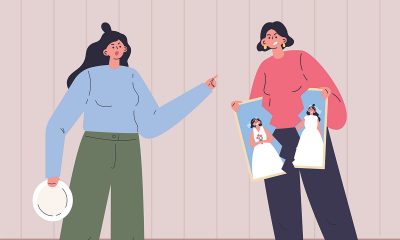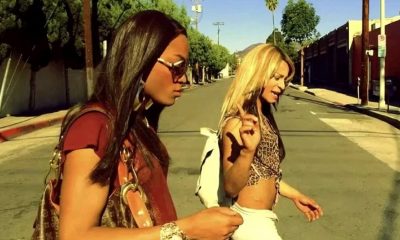a&e features
HGTV employs all six Brady ‘kids’ to help recreate their ’70s-tastic home
Adventures captured on new show ‘A Very Brady Renovation’
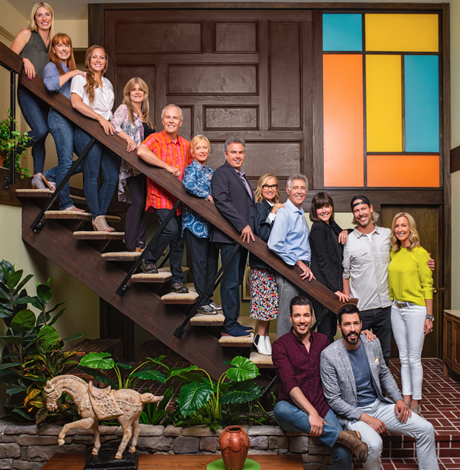
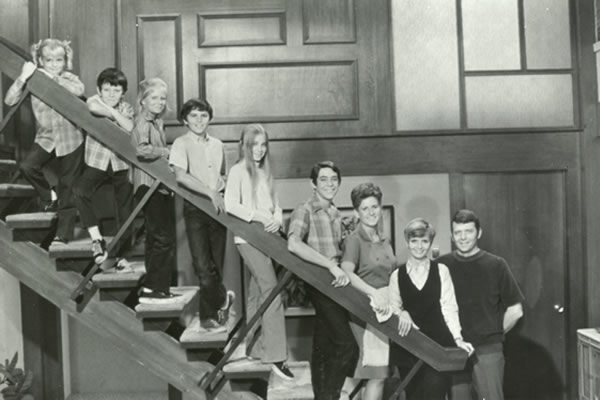
“Brady Bunch” fans were abuzz this week as HGTV unveiled its new show “A Very Brady Renovation” Monday night, which follows all surviving cast members of the original 1969-1974 series as they work with professional renovation experts to recreate their iconic home. The original series debuted 50 years ago this month.
Like most shows of the era, the exteriors seen on the series were a real house. Its interiors were never seen on the hit ABC series — all interiors were filmed on Stage 5 at Paramount Studios. When the house used for the exteriors — located at 11222 Dilling St., in Studio City, Calif., — went on the market last year, a bidding war erupted but HGTV won, purchasing the house for $3.5 million.
Almost immediately, the network planned a massive renovation to make the house look as much inside like the “house” was seen on TV. That involved adding 2,000 square feet to the original floor plan, a task that likely would have given even Mike Brady (an architect) a massive headache!
All six of the Brady “kids” — Barry Williams (Greg), Maureen McCormick (Marcia), Christopher Knight (Peter), Eve Plumb (Jan) and Mike Lookinland (Bobby) joined Jonathan and Drew Scott (“Property Brothers: Forever Home”) Mina Starsiak Hawk and Karen E. Laine (“Good Bones”), Leanne and Steve Ford (“Restored by the Fords”), Jasmine Roth (“Hidden Potential”) and Lara Spencer (“Flea Market Flip”) to execute was the network is calling “the boldest home renovation the world has ever seen.” (Sadly, Alice, Carol and Mike are no longer with us — Ann B. Davis died at age 88 in 2014, Florence Henderson died in 2016 at age 82 and Robert Reed, who was gay, died of AIDS in 1992 at 59.)
Roth, fresh off a red shag carpet event last week, spoke to the Blade by phone Sept. 6 about her work on the show.
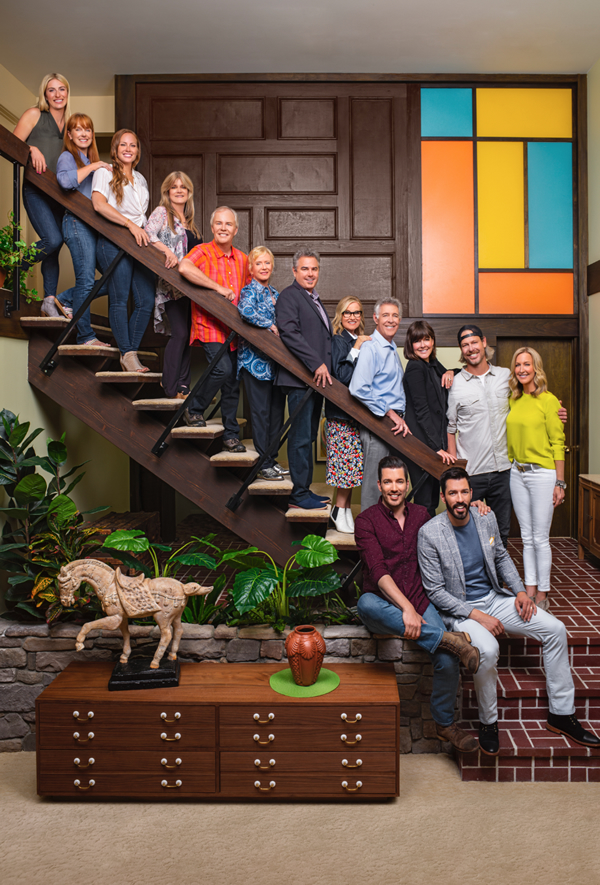
WASHINGTON BLADE: How did you come to be involved in the show/project?
JASMINE ROTH: I got a call and it was like, “Hey, we’re thinking about the Brady Bunch house …” and I was like, “Yeah, absolutely,” they didn’t even have to ask me. It was pretty early on, I don’t think they knew exactly what they were planning to do with the house at that point.
BLADE: Had you been a “Brady Bunch” fan as a kid?
ROTH: Yeah. My mom was a huge fan and watched it with her brother and sister the first time through and so when I was a kid, whenever it was on, she was like, “Oh my goodness, come watch this show, the ‘Brady Bunch’ is on.” I definitely grew up watching it, I knew all the characters, I knew the song, so when I got the call it was a no brainer. To say I’m a fan is an understatement.
BLADE: What did you actually do on the project?
ROTH: Each of us hosts were given different areas of the house. I was in charge of Mike’s den, which was a challenge because it was one of those rooms where a lot of scenes were shot, a lot of important scenes. It was a room people spent a lot of time looking at, so I knew I had to get it right with the drafting table and the green shutters and the little sofa. I was also in charge of the master bedroom … which, at the time, was the first time where a couple was shown sleeping together in the same bed, so for the TV world, that was a big deal.
BLADE: I could never figure out what that was supposed to be behind their bed — some kind of a screen or scrim or something? It wasn’t a wall.
ROTH: I think the idea of it was that it was a paper screen and a window behind it so the light would filter through, but of course, this was just on a set so there wasn’t any real light. But that kind of thing came up again and again because it wasn’t technically a real house on the show. One thing that was interesting, when the Brady kids came in, they went, “Oh my gosh, it has ceilings,” because of course on the set, it was just lights and microphones up there. But I think the headboard area was mean to be this kind of Asian-inspired paper shade. In our design, we made it out of bumpy glass and then we had the exact pattern from the set printed onto a kind of contact paper that adhered to the glass to give it that paper look, but more durable.
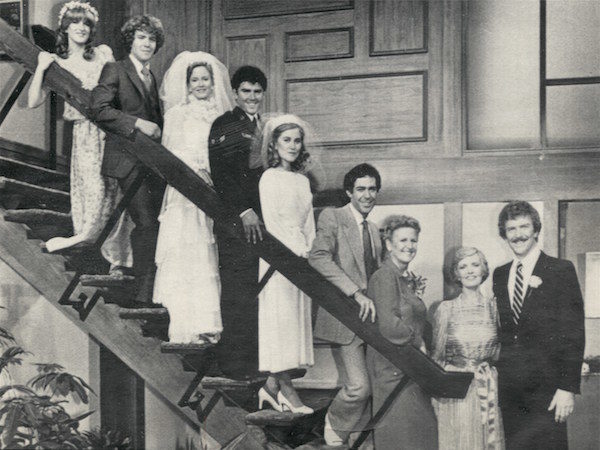
(file photo courtesy Paramount/ABC)
BLADE: The Bradys had so many interesting paintings (or reproductions) in their house. Did Paramount have those in its prop house or did you have to recreate them?
ROTH: Paramount did have a fair amount of items but we weren’t sure if they were from the original set, you know, they did a lot of reboots and specials and things over the years. But we were able to get as much as we possibly could. A lot of it was in pretty rough shape. … As for the paintings, we recreated most of them.
BLADE: Did the nationwide scavenger hunt for furniture and replicas turn up much you were able to use on the show?
ROTH: Oh my goodness, yes. There was a bust of a woman on the headboard of the bed a fan had bought at a thrift shop years before and donated. He didn’t even know at first it was the same on one the show but recognized it later. It’s the kind of thing you’d never consciously notice watching the show, yet the bedroom wouldn’t really be complete without it.
BLADE: Some of those little tchotchkes changed over the run of the show. Did you just pick the ones that were the most recognizable?
ROTH: Yeah, some changed, some didn’t. There were times we had to make decisions but if it was something that was there for multiple seasons, like the horse at the base of the stairs, obviously those had to be there.
BLADE: Did you find the original horse or is it a replica?
ROTH: Well, we found a horse at Paramount. We’re not sure if it was THE horse, but it looked a lot like it. But unfortunately a bunch of the legs had broken off. So we found a similar one at an online auction and we found a way to kind of meld together the pieces with a 3D printer to fix the parts that were broken on the original.
BLADE: There’s also a smaller horse in the den on the endtable beneath the lamp. For those less noticeable props, did you feel you had to find exact replicas or did close enough work?

ROTH: We just did the best we could with the amount of time we had. We tried to get it as exact as possible down to the objects on the vanity table in the master bedroom and the setup of the books on the shelf in Mike’s den.
BLADE: How long did all this take?
ROTH: It was a six-month project; nine months total with the planning and everything.
BLADE: How were the Brady kids to work with?
ROTH: Oh my gosh, I didn’t know what to expect. I didn’t know if they were gonna want to show up and just kidna watch mostly or what. But they were all really ready to get their hands dirty and they were all super excited about it. They were fun and brought a lot of insight. I don’t think we could have done this project without them. Their memories of these spaces at the end of the day are what really brought it all together.
BLADE: Who was the hardest worker?
ROTH: I’d say it varied. Chris Knight was the biggest skeptic at the beginning. He just thought it was too big of a project, but then he ended up working harder than anyone else because he really wanted it to happen.
BLADE: Any of them you particularly clicked with?
ROTH: I worked with everybody. We were paired up with certain people on each room but I live in Orange County, so it’s close and I was able to be there a lot if I had a day off on my own show or I was literally waiting for paint to dry. So I got to work with every single Brady. Every one of them surprised me, that’s what I’ll say.
BLADE: Susan said once — it seemed kinda half-joking, half not — that when they get together they take care not to put Eve and Maureen next to each other. Did you sense any tension between those two?
ROTH: No, that’s so funny. No, I didn’t pick up on any tension at all honestly. We were so focused on the project, I don’t think there would have been time for anything like that or if there was, it would have just immediately dissipated.
BLADE: How did you even begin to add a second floor to the house without disturbing the facade? That seems crazy impossible.
ROTH: That was one of our biggest challenges. We knew we couldn’t mess with the front because that’s what everybody’s used to seeing. … We actually dug down and recessed the family room about a foot lower than it would have been on the set and that’s how we were able to accomplish the angle of the staircase, which was the most important. You know we had to get the staircase right.
BLADE: What will they do with this house now?
ROTH: That’s the million dollar question, I don’t know. It’s tough because there are a lot of restrictions. It’s in a residential neighborhood but it’s also Hollywood, so there’s that. I think it’s a matter of figuring out something that works for everybody but I honestly don’t know.
BLADE: How many episodes are there?
ROTH: I think four plus a bunch of online-only content.
BLADE: Which Brady kid did you most identify with as a kid?
ROTH: Marcia, although she was way cooler and way prettier. So kinda Marcia but in my dreams.
BLADE: Did it seem like there was genuine camaraderie between the Brady kids or no more than it might be for any of us catching up with coworkers from long ago. Don’t you think the public kind of projects onto them and imagines they’re BFFs and hanging out all the time and so on when probably really that’s not the case?
ROTH: Well they all grew up together and you can’t discount that. When you have that kind of shared experience at such a young age, it’s almost like a real brother or sister. They may not be getting together for dinner every week at this point in their lives, but they picked up right where they left off and we really had fun doing this project together. I think it’s a hundred percent genuine and they are truly brothers and sisters, even if it is just on TV.
Remembering Robert Reed
Despite having a combative relationship with “Brady Bunch” executive producer Sherwood Schwartz, gay actor Robert Reed, who was closeted most of his life, never missed a Brady reunion, having shown up for “The Brady Bunch Hour” (1976-1977), “The Brady Girls Get Married” (1981), “A Very Brady Christmas” (1988) and “The Bradys” (1990).
A lot of the tension centered around Reed, a classically trained actor, thinking the Brady scripts were too silly and implausible. Florence Henderson (Carol) and Barry Williams (Greg) in their respective memoirs (“Life is Not a Stage” and “Growing Up Brady”) have said Reed could be a pain to work with.
“If there was a source of recurring tension on the set, it usually concerned Bob,” Henderson writes. “He wanted ‘The Brady Bunch’ to be Shakespeare. It was the catalyst for terrible fights with Sherwood.”
Williams writes that although the tension continued through the life of the show and through its reunions, Reed was good to the young cast and they didn’t see a lot of the more terse exchanges. “He treated the kids as though they were his real family,” Henderson writes.
“I want to make it crystal clear that this sort of tension was not commonplace on the set … and was not exhibited in front of the kids,” Schwartz is quoted as having said in Williams’ book. “It almost always took place late in the shooting day, long after the Brady kids had gone home. Under normal everyday circumstances, our (set) was friendly, comfortable, relaxed and enjoyable. … Friction was an exception not the rule.”
Was Reed combative by nature or could some of his grumpiness come from being forced to stay in the closet pretty much his whole life? Henderson thinks that compounded his irritability.
“It’s hard to imagine what it must have been like in that era to be an actor in fear of losing his career if his sexual orientation were to become public,” she writes. “Being in that closet had to be a very stressful place.”
— JOEY DiGUGLIELMO
a&e features
Looking back at the 10 biggest A&E stories of 2025
‘Wicked,’ Lady Gaga’s new era, ‘Sexy’ Bailey and more

Although 2025 was a year marked by countless attacks on trans rights and political setbacks, the year also saw brilliant queer artists continuing to create art. From Cannes and Sundance Award winners now vying for Oscar consideration to pop icons entering new stages of their careers, queer people persevered to tell their stories through different media.
With the state of the world so uncertain, perhaps there’s no more vital time to celebrate our wins, as seen through some of this year’s top pop culture moments. While there’s no collection of 10 stories that fully encompass “the most important” news, here are some events that got the gays going:
10. ‘Mysterious Gaze of the Flamingo’ wins big at Cannes

The Cannes Film Festival has become a crucial start for films hoping to make their way to the Oscars, and first-time director Diego Céspedes won the top Un Certain Regard prize for his intimate western “The Mysterious Gaze of the Flamingo.” The film is set in the ‘80s and is intended as an allegory for the AIDS epidemic. Seeing a film that unpacks vital queer history win one of the most coveted awards at Cannes has been a huge point of pride in the independent filmmaking community.
Since the film bowed at Cannes, it has been selected as Chile’s Oscar entry in the Best International Feature race. Speaking with The Blade during the film’s AFI Fest run in October, Céspedes said: At first, I was kind of scared to have this campaign position in the times that we’re living [in] here. But at the same time, I think the Oscars mean a huge platform — a huge platform for art and politics.”
9. ‘The Last of Us’ returns for an even gayer season 2
While the first season of The Last of Us gave us one of TV’s most heartbreaking queer love stories in the episode “Long, Long Time,” Season 2 doubled down on its commitment to queer storytelling with the blossoming relationship between Ellie (Bella Ramsey) and Dina (Isabela Merced). The show expanded on the pair’s relationship in the original video game, making it perhaps the central dynamic to the entire season. That unfortunately came with more homophobic backlash on the internet, but those who checked out all the episodes saw a tender relationship form amid the show’s post-apocalyptic, often violent backdrop. For their performance, Ramsey was once again nominated for an Emmy, but Merced deserved just as much awards attention.
8. ‘Emilia Pérez’ sparks controversy
Jacques Audiard’s genre-bending trans musical “Emilia Pérez” proved to be an awards season juggernaut this time last year, winning the Golden Globe for Best Musical/Comedy. But when the lead star Karla Sofia Gascón’s racist, sexist, and homophobic old tweets resurfaced, the film’s Oscar campaign became a tough sell, especially after Netflix had tried so hard to sell Emilia Pérez as the “progressive” film to vote for. Mind you, the film had already received significant backlash from LGBTQ+ audiences and the Mexican community for its stereotypical and reductive portrayals, but the Gascón controversy made what was originally just social media backlash impossible to ignore. The only person who seemed to come out of the whole debacle unscathed was Zoe Saldaña, who won the Oscar for Best Supporting Actress over Ariana Grande.
7. ‘Sorry, Baby’ establishes Eva Victor as major talent
Back in January at the Sundance Film Festival, Eva Victor (known by many for her brand of sketch comedy) premiered their directorial debut “Sorry, Baby” to rave reviews, even winning the Waldo Salt Screening Award. Victor shadowed Jane Schoenbrun on the set of “I Saw the TV Glow,” and seeing Victor come into their own and establish such a strong voice immediately made them one of independent cinema’s most exciting new voices. A memorable scene in the film sees the main character, Agnes (played by Victor), struggling to check a box for male or female, just one example of how naturally queerness is woven into the fabric of the story.
Most recently, Victor was nominated for a Golden Globe for her performance in the film, and she’s represented in a category alongside Jennifer Lawrence (“Die My Love”), Jessie Buckley (“Hamnet”), Julia Roberts (“After the Hunt”), Renate Reinsve (“Sentimental Value”) and Tessa Thompson (“Hedda”). The film also received four Independent Spirit Award nominations overall.
6. Paul Reubens comes out in posthumous doc

While Paul Reubens never publicly came out as gay before passing away in 2023, the two-part documentary “Pee-wee as Himself” premiered back in May on HBO Max, giving the legendary comedian a chance to posthumously open up to the world. Directed by Matt Wolf, the documentary explores how Reubens found his alter ego Pee-Wee Herman and why he kept his private life private.
The documentary won an Emmy in the Outstanding Documentary or Nonfiction Special category and remains one of the most critically acclaimed titles of the year with a 100% Rotten Tomatoes score. Also worth noting, the National Geographic documentary Sally told the posthumous coming out story of Sally Ride through the help of her long-time partner, Tam O’Shaughnessy.
5. Lady Gaga releases ‘Mayhem’
Lady Gaga entered a new phase of her musical career with the release of Mayhem, her seventh album to date. From the frenzy-inducing pop hit Abracadabra to the memorable Bruno Mars duet featured on “Die With a Smile,” seeing Gaga return to her roots and make an album for the most die-hard of fans was especially rewarding after the underwhelming film releases of “House of Gucci” and “Joker: Folie à Deux.” Gaga has been touring with The Mayhem Ball since July, her first arena tour since 2018. She even extended her tour into 2026 with more North American dates, so the party isn’t stopping anytime soon. And Gaga is even set to make an appearance next May in “The Devil Wears Prada 2.”
4. Cynthia Erivo, Ariana Grande perform at the Oscars

While “Wicked: For Good” didn’t quite reach the heights of the first film, we will forever have Cynthia Erivo and Ariana Grande’s breathtaking live performance that opened the 97th Academy Awards. The pair sang a rendition of “Over the Rainbow,” “Home,” and “Defying Gravity,” paying proper homage to the original 1939 “Wizard of Oz.” Even non-Wicked fans can’t deny how magical and brilliantly staged this performance was. With both Erivo and Grande up for acting Oscars last year, they’re hoping to repeat success and make history with consecutive nominations. Either way, let’s hope there’s another live performance in the making, especially with two new original songs (The Girl in the Bubble and No Place Like Home) in the mix.
3. Indya Moore speaks out against Ryan Murphy
Indya Moore has consistently used social media as a platform for activism, and in September, posted a 30-minute Instagram live speaking out against “Pose” co-creator Ryan Murphy. Moore claimed that Murphy wasn’t being a true activist for trans people. “Ryan Murphy, we need you to do more. You need to address the racism, the violence, and the targeting of people on your productions, Ryan Murphy. You do need to make sure trans people are paid equally. Yes, Janet did the right thing,” Moore said. Murphy was also back in the headlines this year for the critically panned “All’s Fair” and the controversial “Monster: The Ed Gein Story” starring Laurie Metcalf and Charlie Hunnam.
2. Cole Escola wins Tony for Best Leading Actor
Few pop culture moments this year brought us together more than Cole Escola winning a Tony award for “Oh, Mary!” the Broadway show they created, wrote and starred in (we love a triple threat!) Escola made history by becoming the first nonbinary person to win a Tony in the leading actor category, and seeing them excitedly rush to the stage wearing a Bernadette Peters-inspired gown instantly became a viral social media moment.
The cherry on top of Escola’s major moment is the recent news that they are writing a Miss Piggy movie with Jennifer Lawrence and Emma Stone producing — news that also broke the internet for the better. We cannot wait!
1. Jonathan Bailey makes gay history as ‘Sexiest Man Alive’

The same year as his on-screen roles in blockbusters “Jurassic World Rebirth” and “Wicked: For Good,” Jonathan Bailey made history as the first openly gay man to be named People magazine’s “Sexiest Man Alive.” The fact that it took 40 years for an openly gay man to earn the title is a signifier of how far we still have to go with queer representation, and seeing Bailey celebrated is just one small step in the right direction.
“There’s so many people that want to do brilliant stuff who feel like they can’t,” he told PEOPLE, “and I know the LGBT sector is under immense threat at the moment. So it’s been amazing to meet people who have the expertise and see potential that I could have only dreamed of.” In 2024, Bailey founded the charity titled The Shameless Fund, which raises money for LGBTQ+ organizations.
a&e features
Your guide to D.C.’s queer New Year’s Eve parties
Ring in 2026 with drag, leather, Champagne, and more

With Christmas in the rear view mirror, we can turn our attention to ringing in a much-anticipated New Year with a slew of local LGBTQ parties. Here’s what’s on tap.
Pitchers
This spacious Adams Morgan bar is hosting the “Pitchers’ Perfect New Year’s Eve.” There will be a midnight Champagne toast, the ball drop on the big screens, and no cover, all night long. The bar doesn’t close until 4 a.m., and the kitchen will be open late (though not until close). All five floors will be open for the party, and party favors are promised.
Trade
D.C.’s hottest bar/club combo is leaning into the Shark motif with its NYE party, “Feeding Frenzy.” The party is a “glitterati-infused Naughty-cal New Year’s Even in the Shark Tank, where the boats are churning and the sharks are circling.” Trade also boasts no cover charge, with doors opening at 5 p.m. and the aforementioned Shark Tank opening at 9 p.m.. Four DJs will be spread across the two spaces; midnight hostess is played by Vagenesis and the two sea sirens sensuously calling are Anathema and Justin Williams.
Number Nine
While Trade will have two DJs as part of one party, Number Nine will host two separate parties, one on each floor. The first floor is classic Number Nine, a more casual-style event with the countdown on TVs and a Champagne midnight toast. There will be no cover and doors open at 5 p.m. Upstairs will be hosted by Capital Sapphics for its second annual NYE gathering. Tickets (about $50) include a midnight Champagne toast, curated drink menu, sapphic DJ set by Rijak, and tarot readings by Yooji.
Crush
Crush will kick off NYE with a free drag bingo at 8 p.m. for the early birds. Post-bingo, there will be a cover for the rest of the evening, featuring two DJs. The cover ($20 limited pre-sale that includes line skip until 11 p.m.; $25 at the door after 9 p.m.) includes one free N/A or Crush, a Champagne toast, and party favors (“the legal kind”). More details on Eventbrite.
Bunker
This subterranean lair is hosting a NYE party entitled “Frosted & Fur: Aspen After Dark New Year’s Eve Celebration.” Arriety from Rupaul Season 15 is set to host, with International DJ Alex Lo. Doors open at 9 p.m. and close at 3 p.m.; there is a midnight Champagne toast. Cover is $25, plus an optional $99 all-you-can-drink package.
District Eagle
This leather-focused bar is hosting “Bulge” for its NYE party. Each District Eagle floor will have its own music and vibe. Doors run from 7 p.m.-3 a.m. and cover is $15. There will be a Champagne toast at midnight, as well as drink specials during the event.
Kiki, Shakiki
Kiki and its new sister bar program Shakiki (in the old Shakers space) will have the same type of party on New Year’s Eve. Both bars open their doors at 5 p.m. and stay open until closing time. Both will offer a Champagne toast at midnight. At Kiki, DJ Vodkatrina will play; at Shakiki, it’ll be DJ Alex Love. Kiki keeps the party going on New Year’s Day, opening at 2 p.m., to celebrate Kiki’s fourth anniversary. There will be a drag show at 6 p.m. and an early 2000s dance party 4-8 p.m.
Spark
This bar and its new menu of alcoholic and twin N/A drinks will host a NYE party with music by DJ Emerald Fox. Given this menu, there will be a complimentary toast at midnight, guests can choose either sparkling wine with or without alcohol. No cover, but Spark is also offering optional wristbands at the door for $35 open bar 11 p.m.-1 a.m. (mid-shelf liquor & all NA drinks).
a&e features
Local, last-minute holiday gift ideas
Celebrate the season while supporting area businesses

The DowntownDC Holiday Market is bustling. Union Station is decked out with its annual Christmas tree. Washingtonians have wrapped their houses and apartment balconies with festive lights and holiday decorations. The holiday season is here. And with stockings to fill and empty space under the tree, Washington’s local shops and artists have plenty to offer.
Show your LGBTQ and D.C. pride with the Washington Blade’s annual holiday gift guide.
To embrace the holiday buzz: The Blanco Nwèl cocktail from Alchy Cocktails. This Caribbean eggnog is one of Alchy Cocktail’s seasonal holiday cocktails. The flavor profile is similar to coquito, a traditional Puerto Rican Christmas drink with a coconut base. As a queer and Caribbean-owned business, Alchy Cocktails has been based out of Washington since 2021. Blanco Nwèl is available in both cocktail ($24) and mocktail ($12) online and at a variety of holiday markets, including the Tingey Plaza Holiday Market, the Flea Market at Eastern Market, Union Station’s Main Hall Holiday Market, and more. ($24)
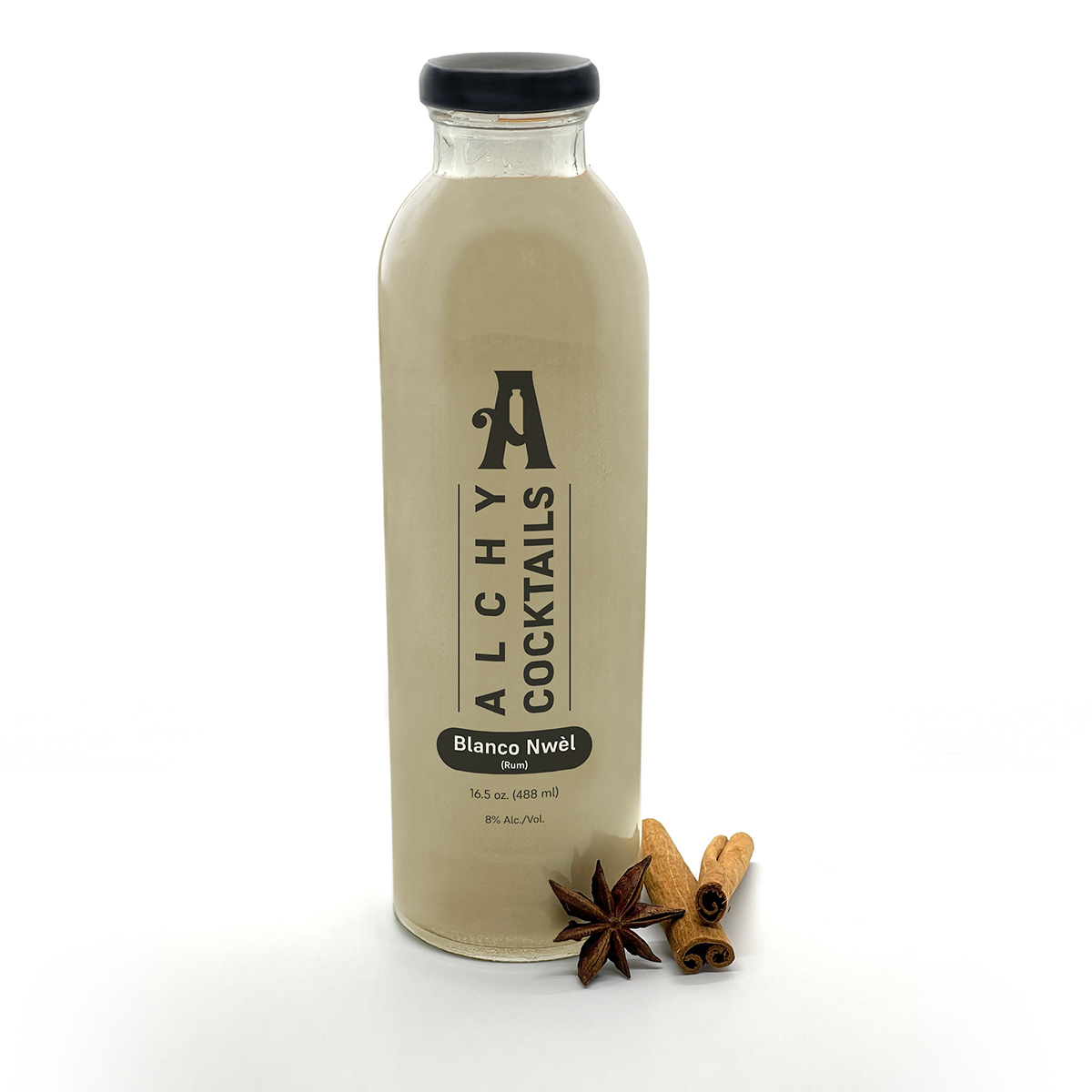
A spicy bite: Gordy’s Cajun Okra from Salt and Sundry. These spicy, tangy pickles pull on Southern Cajun-style flavors, packing a punch with paprika, cayenne, and more. Gordy’s is an LGBTQ-owned and Washington-based brand, making this gift an opportunity to support a local LGBTQ business straight from the jar. This pantry staple is available on Salt & Sundry’s website and at its locations in Union Market, Logan Circle, and its Georgetown holiday pop-up store. ($14)
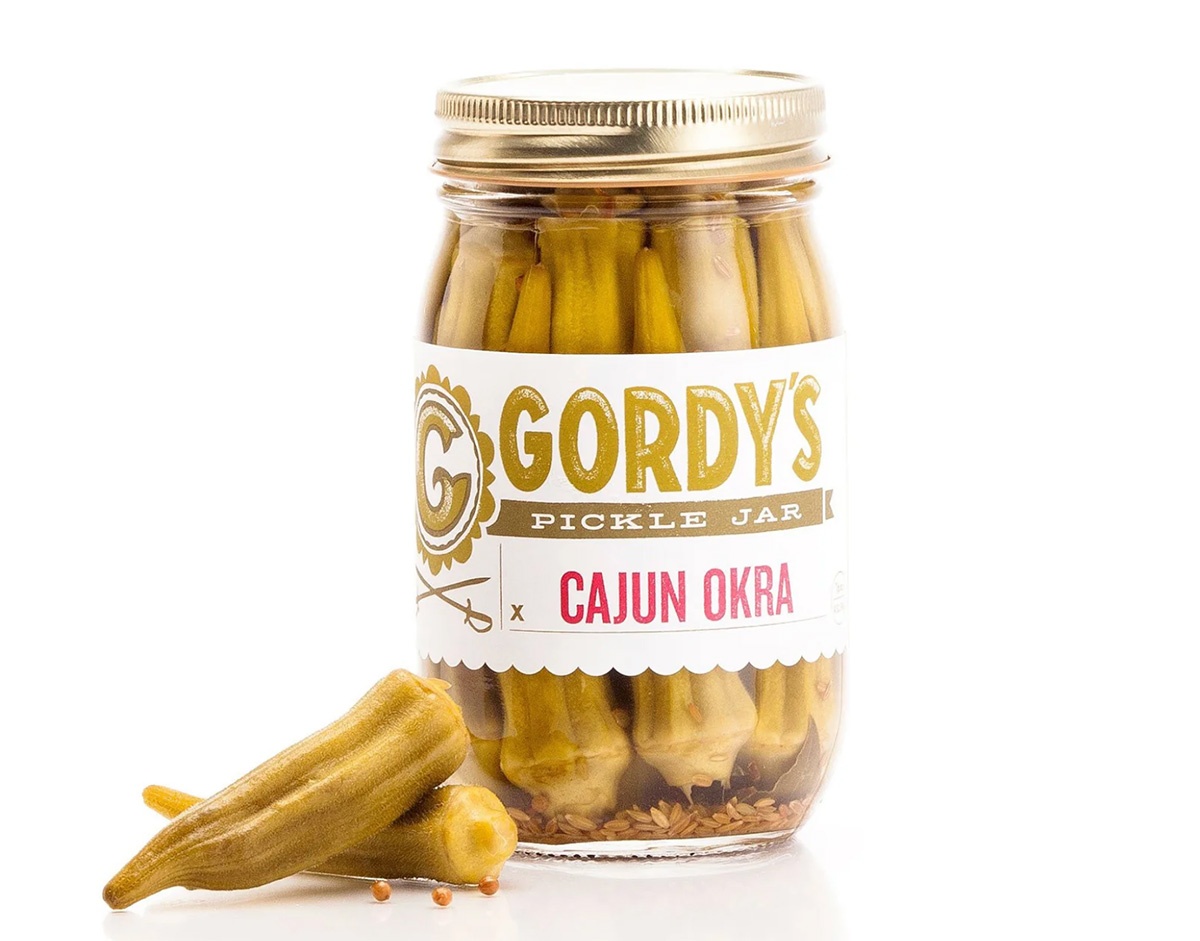

To celebrate Washington pride: The DC Landmark Tote Bag from The Neighborgoods. Native Washingtonians, visitors, friends and family alike will find something to love about this Washington-themed tote bag. Food trucks, the 9:30 Club, the Metro logo and pandas from the National Zoo are just some of the city’s landmarks depicted across the tote in a red, white, and blue color palette. The tote is a part of the DC Landmarks collection, which donates 10 percent of its sales to the American Civil Liberties Union. The Neighborgoods itself is a local, woman-owned business built out of a passion for screen-printing in 2013. The 100 percent cotton canvas tote is for sale online or at the DowntownDC Holiday Market. ($22)
To give friends and family their flowers: The Flowers Bandana from All Very Goods. This 100 percent cotton bandana was designed in Washington and hand printed in India. Its uniqueness comes in being covered with the faces of Black women, representing a “love letter to all women but especially Black women,” according to All Very Goods. The Black woman-owned and operated business, based out of Northwest Washington, has a mission to celebrate diversity and representation through its products. The bandana intends to give Black women their “flowers.” The Flowers bandana is available for purchase online. ($24)
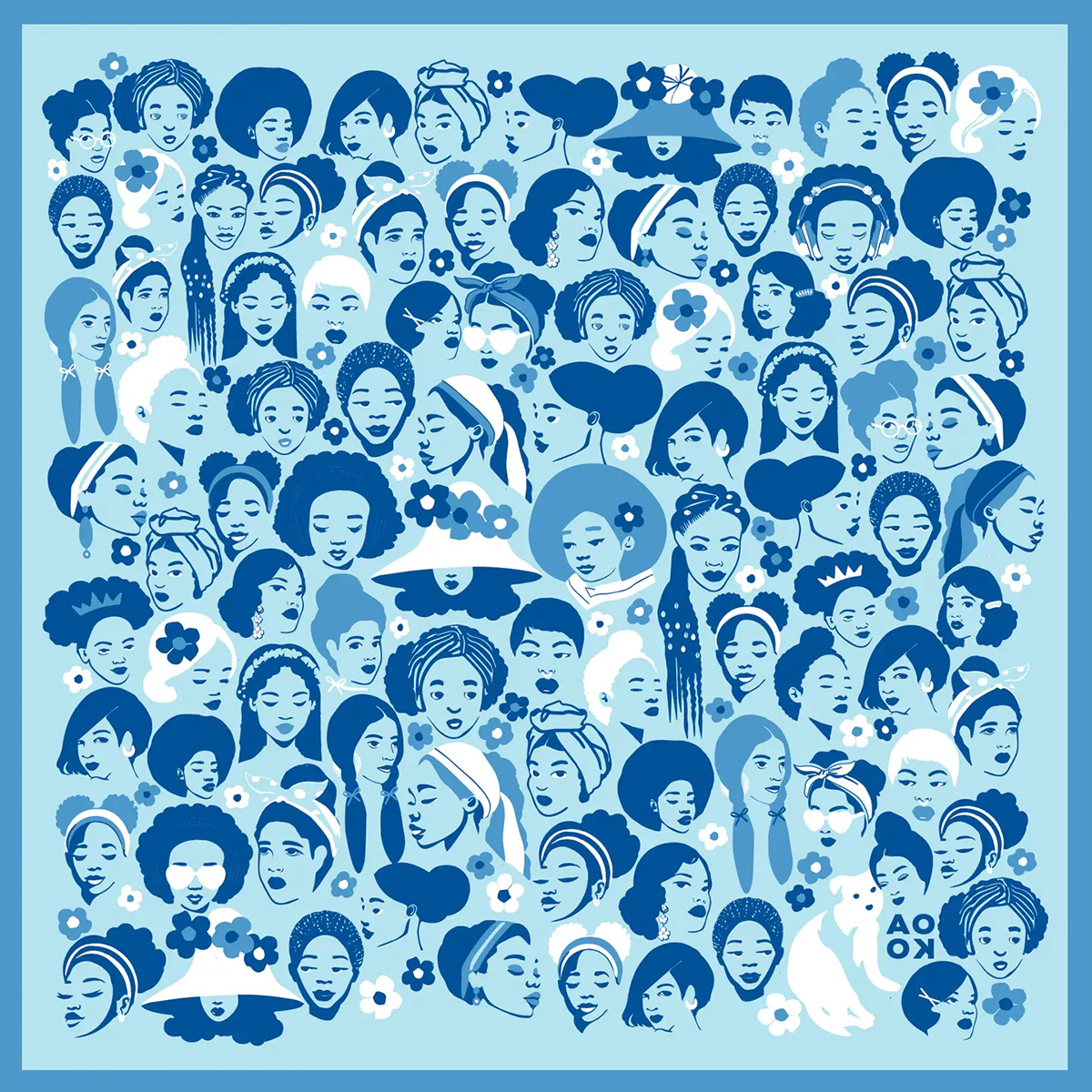
To unlock culinary creativity: The Curious Chef Gift Collection from Each Peach Market. This customizable collection of kitchen oddities — ranging from tinned fish to chili oil — is a quirky gift for the most inventive chefs. The collection is available in a Standard Santa, Extra Goodies and Super Holiday Size for up to $165. The Washington-based market, founded in 2013, permits customers to make the collection special by specifying what unique ingredients are packaged, including products made by local or LGBTQ brands. Each Peach Market offers assembly and pick up in-person at its Mount Pleasant shop and also offers local delivery and nationwide shipping via its website. ($85)
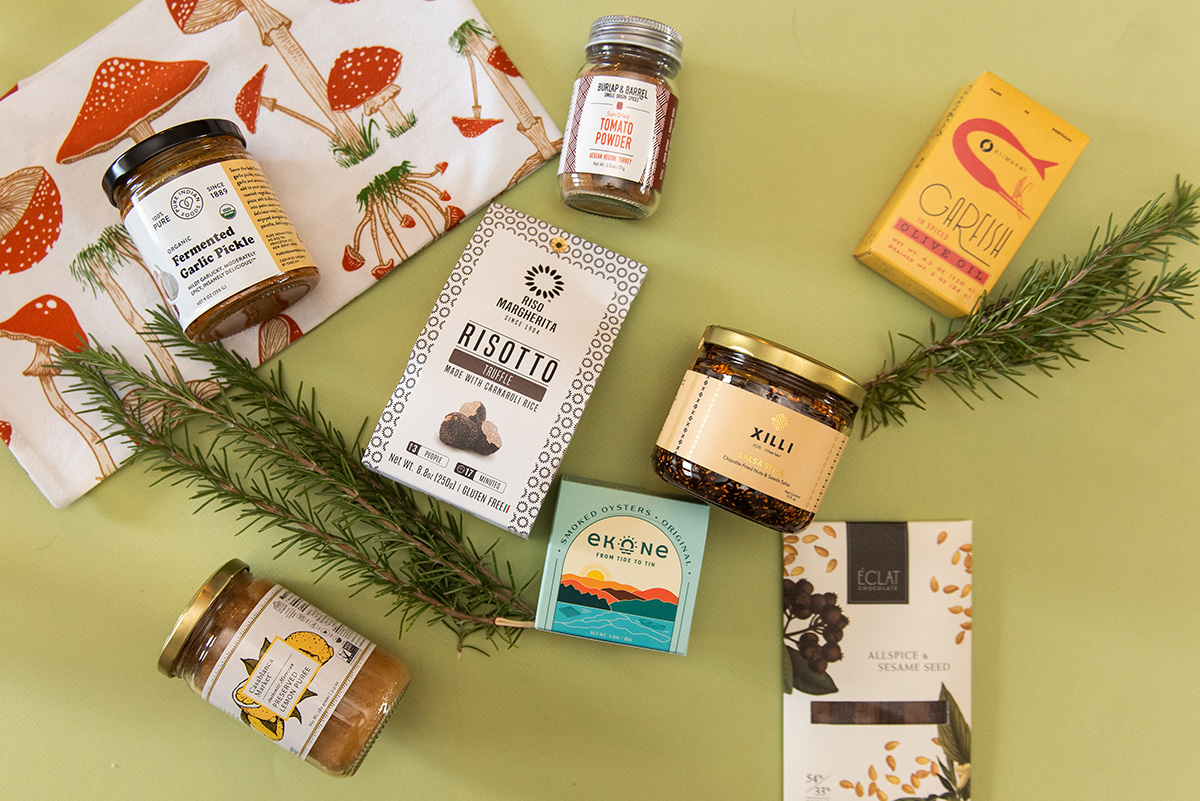
To give a touch of sweetness: The DC Landmark Chocolate Covered Oreo Holiday Cookies from Capital Candy Jar. Wrapped in a festive red bow, this box of nine cookies embraces love for Washington and the holiday season in one. Among the dark and milk chocolate covered cookies are images of the U.S. Capitol, the White House, the Lincoln Memorial, the Jefferson Memorial and festive hollies. The treat, packaged in a Hill East facility just a few blocks from the Capitol, is available for purchase online and at the DowntownDC Holiday Market. ($23.95)

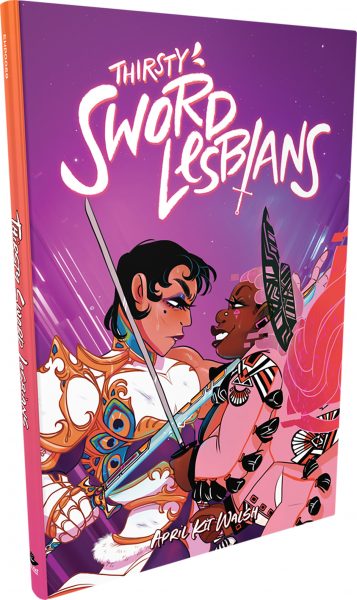
To celebrate queer gaming: Thirsty Sword Lesbians from Labyrinth Games & Puzzles. This roleplaying game embraces lesbian culture by unlocking a world of swords, romance, and battle. Ideal for group settings, the book presents a system of world building and character identities that are best brought to life by creative minds. Labyrinth, which has been a local Washington business for more than 15 years, celebrates non-digital fun through games and puzzles that connect the community. This gift is offered online and at Labyrinth’s Capitol Hill location. ($29.99)
To make a bold statement: The “Resist” T-shirt from Propper Topper. This locally screen-printed black tee features the Washington flag designed within a raised fist, symbolizing both Washington pride, and political resistance. The shirt is made exclusively by Propper Topper, a local Washington business that evolved from a hat shop to a gift store since opening in 1990. The tri-blend unisex shirt is available both for pickup at Propper Topper’s Cathedral Heights location and shipping via the online site. ($32)
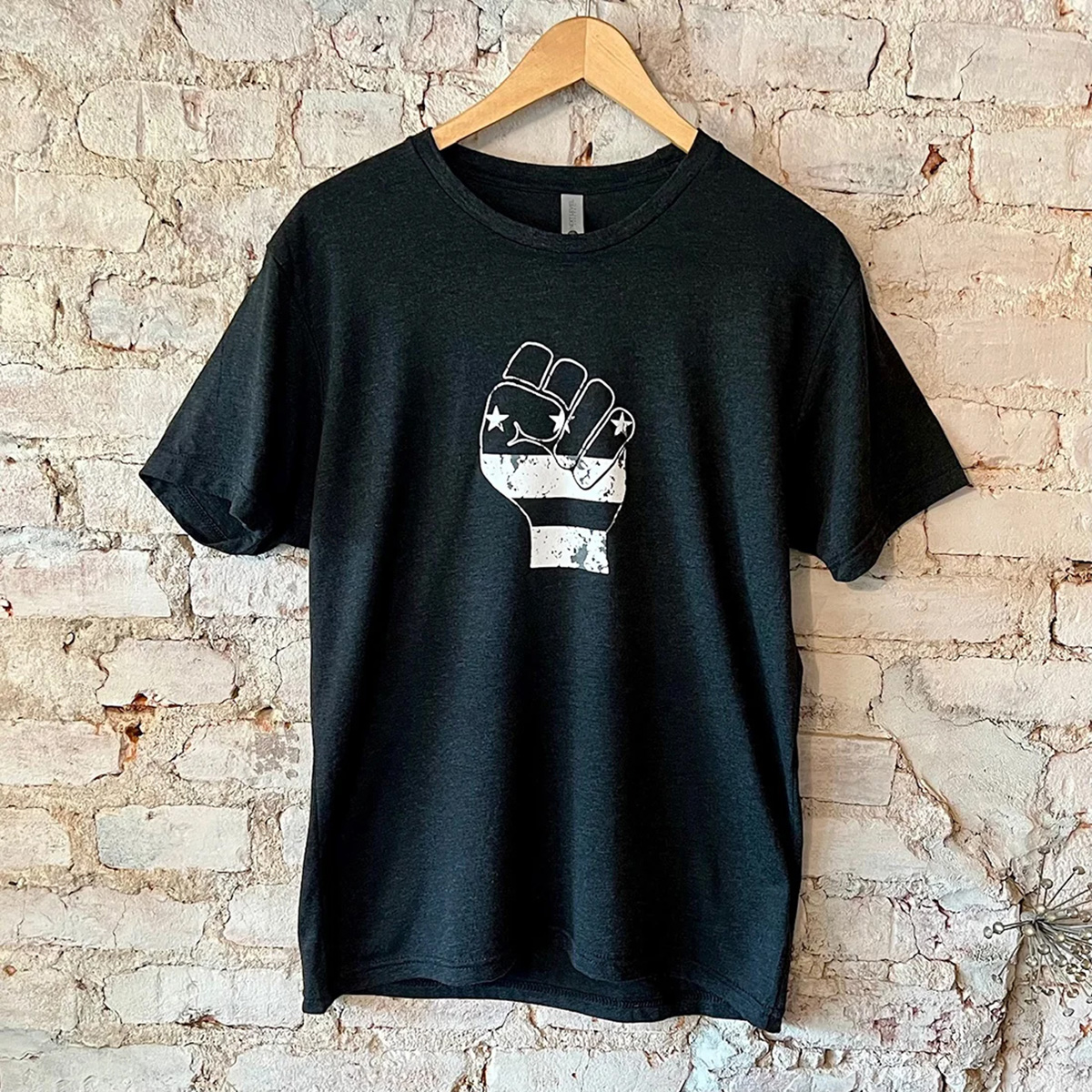
To keep it c(g)lassy: The Glass Ball earrings from Blue Moon Aquarius. Gifting can rarely go wrong when it comes to a new pair of earrings. The unique statement earrings — made of polymer clay, glass, and 18k gold plating over surgical steel — are hand cut, sanded and assembled in Washington, meaning each set is unique. Blue Moon Aquarius, a local brand, is known for its small batch jewelry and home decor designed with clay materials. Available in oxblood, hunter green, lavender, and bluestone color palettes, these earrings are available for purchase on Blue Moon Aquarius’ website and at the DowntownDC Holiday Market. ($48)
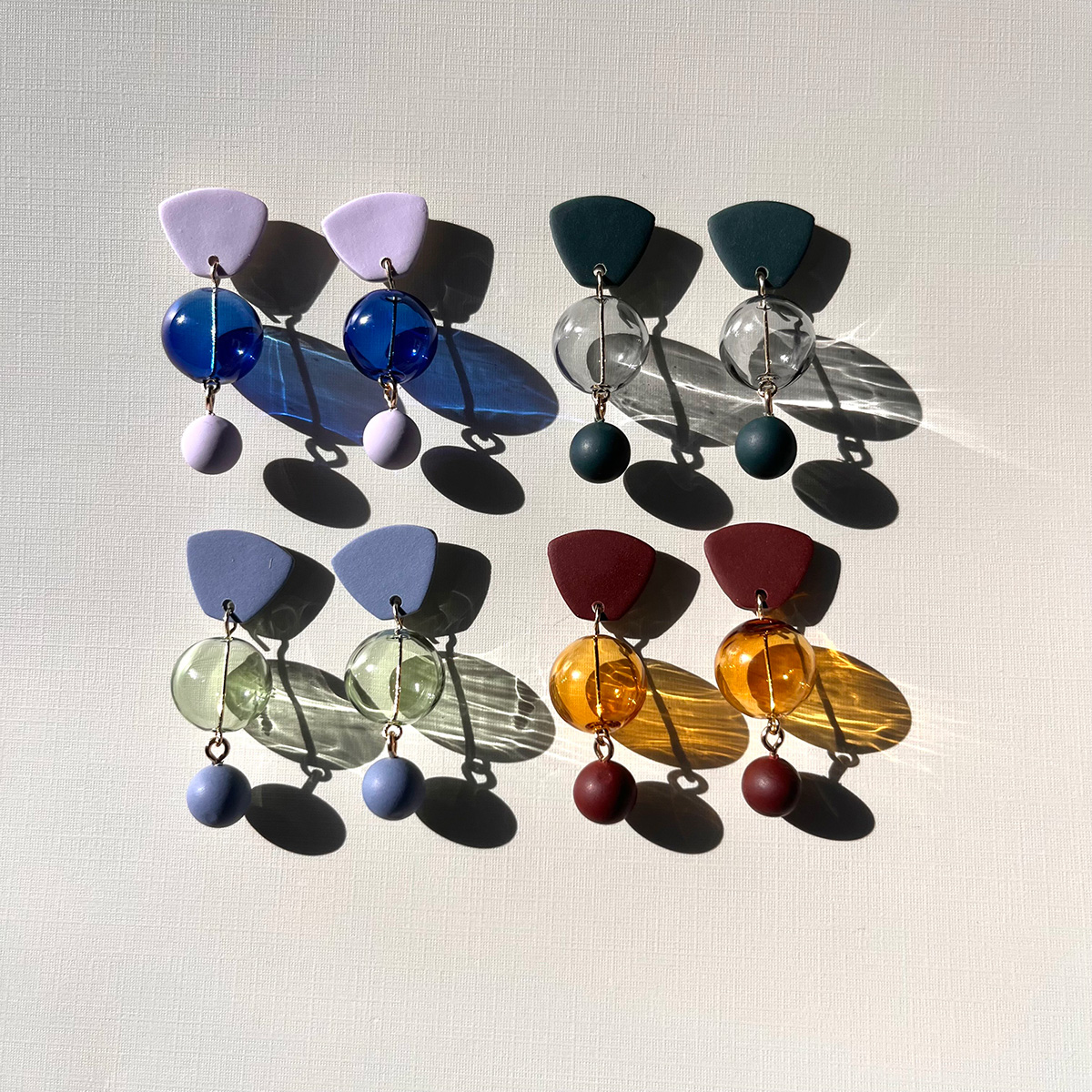
To elevate a holiday tea or charcuterie party: The Honey Flight: Tea Lover’s Selection from BannerBee. This local honey company presents the ideal gift to make cozying up with a cup of tea slightly more special. The Honey Flight contains three types of raw wildflower honey infused with fair trade Ugandan vanilla bean, chai spices, and locally sourced lemon thyme herb. The gift is also an opportunity to uplift a family company based in the Mid-Atlantic that offers all-natural, sustainable products. The flight is available online, at the DowntownDC Holiday Market or at the Arlington Courthouse and Dupont Farmers’ Markets. ($36)
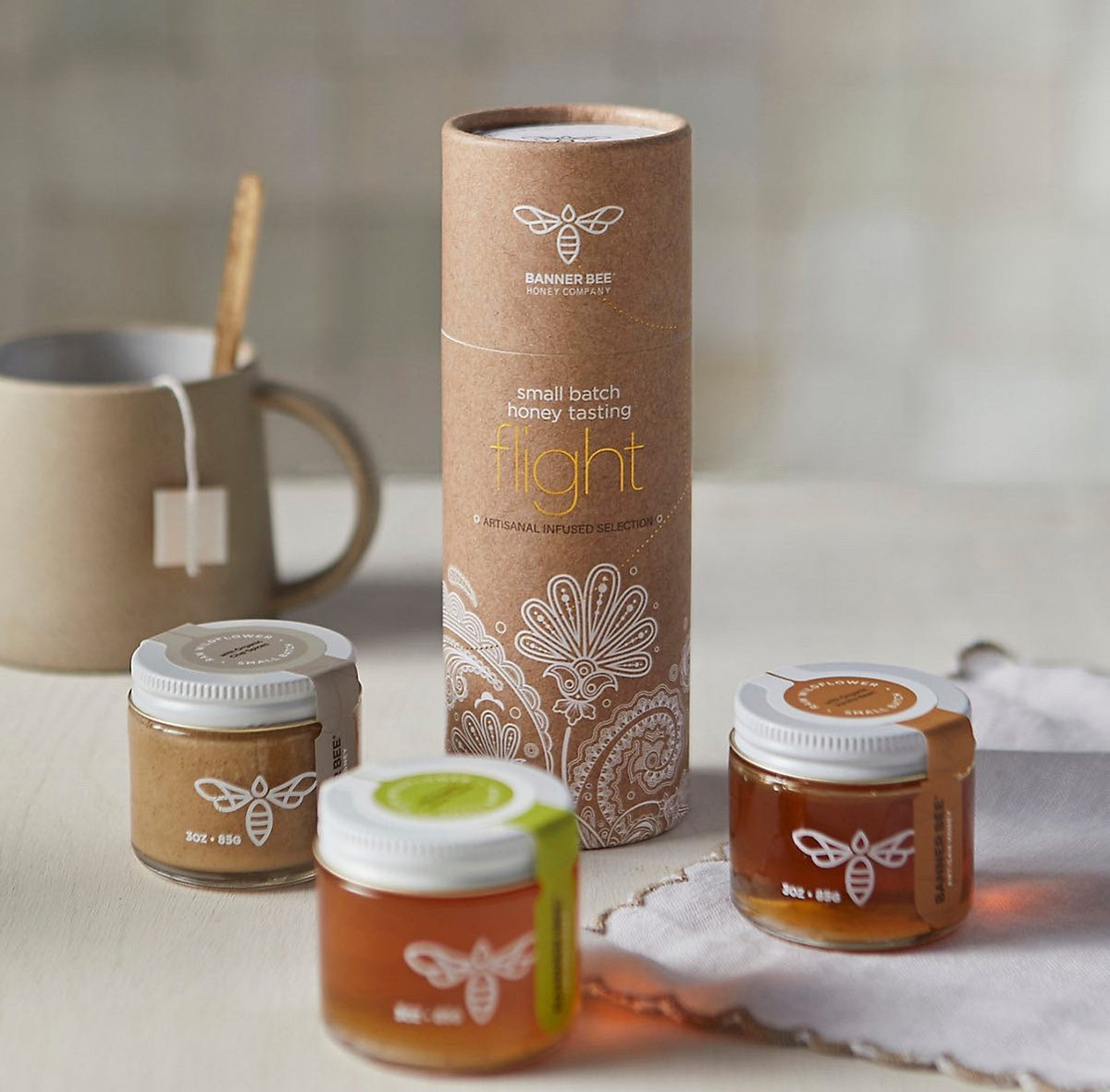
For Baltimore shoppers: If you’re in Charm City, don’t miss Balston Mercantile, opened by a gay couple in June. Their gorgeous shop in the Hampden neighborhood offers an array of unique, upscale finds, from barware and artwork to cookbooks and home decor and more. (849 W. 36th St.)



